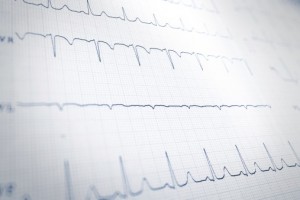Anyone who has suffered a brain injury, or had a loved one suffer the same, knows that not all symptoms are the alike.
Take the case of seizure. It can be the result of brain trauma, such as concussions or a bullet wound, which have long-term consequences for the brain’s ability to function normally. It can also be the cause of brain trauma, as in cases of epilepsy, meningitis or stroke, where the brain’s existing disease causes seizure that further harms the brain.
But now, in either case, doctors are discovering ways to detect seizures before they happen.
Not-So-Simple Seizures
Say the word “seizure,” and most people  think of someone dropping heavily to the floor, convulsing, groaning and sometimes losing control of bodily functions. This is known as a grand mal, and it’s the result of electrical signals over the whole surface of the brain getting out of their regular rhythm.
think of someone dropping heavily to the floor, convulsing, groaning and sometimes losing control of bodily functions. This is known as a grand mal, and it’s the result of electrical signals over the whole surface of the brain getting out of their regular rhythm.
But in fact, this is just one kind of seizure. If you saw a person look off absently into the distance, perhaps with their eye or cheek muscle twitching, you’d hardly consider it a cause for alarm, right? Unless, of course, these actions are the result of a frontal lobe seizure.
Or take the case of a complex partial seizure in the temporal lobe, where a person suddenly has a lapse in memory, or difficulty speaking. Depending on their age and health condition, you might simply think it was a momentary disability, when in fact, it’s an indication that the brain is in seizure.
While a grand mall might be the most dramatic, but it’s certainly not the only one with potentially dire consequences. According to a recent editorial in the American Journal of Neuroradiology, “when seizure activity is markedly prolonged”–any type of seizure–“brain damage can occur quickly and be profound.”
Recently, a Stanford neuroscientist and epilepsy specialist combined forces with a college who works in music research. Together, they developed an instrument called a brain stethoscope. Its purpose is to allow anyone to listen in on the brain, and detect seizures that hide in plain view.
Brain Singing
Previously, if a seizure wasn’t obvious, the only way to really know it was happening was to administer an electroencephalogram (EEG). These are familiar to most people–the wave-like drawings that only experts can interpret. Even doctors, unless they were neurosurgeons, couldn’t read an EEG and really know what the patient needed.
But the brain stethoscope changes all that. It picks up brain wave activity through a pair of wearable electrodes that attach to the patient’s skull. By detecting electrical emissions from the brain, the stethoscope converts the signals of neurons into sounds that are close in tone to the human voice. The combination of signals sounds like singing…and in fact, that’s what music researcher Chris Chafe calls the sound.
The “singing” sounds different with every person who uses the stethoscope. Normal brain activity sounds fairly tame, but it still varies from person to person. Chafe himself has had a few jam sessions on his cello, playing along to the sound of his own brain waves.
A higher intensity and variety of “singing,” however, indicates seizure activity. And this is the hope of Chafe, his neuroscientist partner Josef Parvizi, and the Stanford Hospital ICU that is testing the prototype: that doctors, ER nurses, and home caregivers can use the stethoscope to immediately know whether a patient’s brain is gearing up toward a seizure, and get them the help they need.
Get Help
If you are caught in a legal battle involving brain trauma and don’t know where to turn, call The Brain Injury Law Center at 757-244-7000 for a no-cost, no-obligation consultation, or fill out the Free Case Review form on the left side of this page. Our expert legal team is ready to help you get the answers you need.


